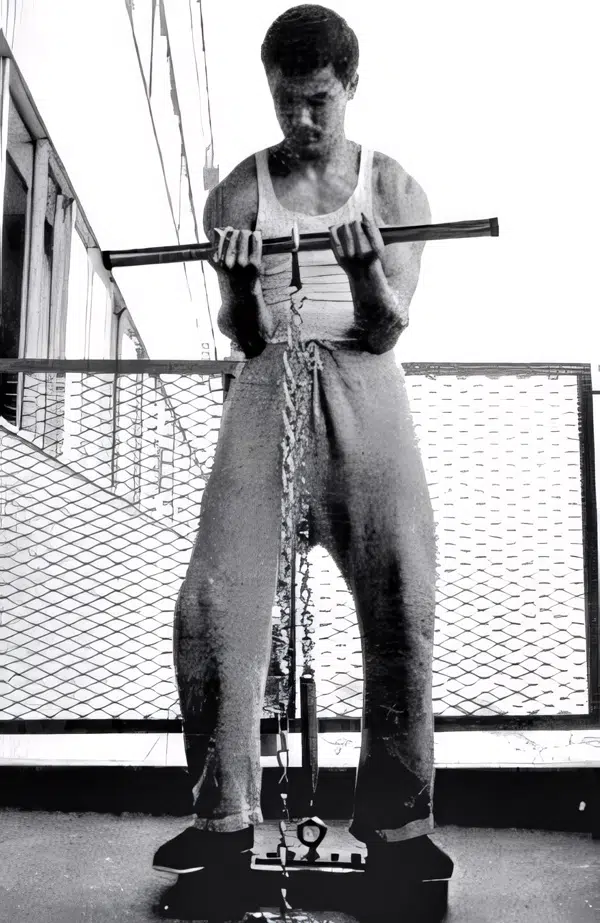Getting and staying in shape requires a big commitment, involving a significant investment in time and effort. Contrary to what you might have heard, you can’t get fit, lose weight, or build muscle overnight. Rather, making progress requires months or even years of dedication.
Unfortunately, staying on the path to better fitness and health is not always easy, and there are numerous obstacles you must overcome to reach your exercise goals. According to research, the most common barriers include a lack of time and facilities and a fear of injury (1).
However, in my experience as a 30-year veteran personal trainer, these barriers are not unbeatable. Overcoming them just requires some “out-of-the-box thinking” and a willingness to embrace some lesser-known training methods.
For example, many exercisers think that anything less than an hour-long workout is a waste of time. This simply isn’t true! You can get a great workout in just a few minutes, and you don’t even need to join a gym to get fit and lose weight.
In this article, I share one of my favorite time-saving workout methods – isometrics – and reveal the only three isometric exercises you need for full-body strength.
What Are Isometrics?

Level Up Your Fitness: Join our 💪 strong community in Fitness Volt Newsletter. Get daily inspiration, expert-backed workouts, nutrition tips, the latest in strength sports, and the support you need to reach your goals. Subscribe for free!
Most people associate exercise with dynamic movements, such as running, cycling, squatting, curling, and pressing. These activities involve a coordinated shortening and lengthening of the target muscles, collectively called isotonic contractions.
However, muscles can also generate force without shortening or lengthening. This is called an isometric contraction. Isometric training involves contracting or tensing your muscles without moving your joints.
There are two main types of isometric training – yielding and overcoming.
Yielding isometrics involve contracting your muscles against an external load, such as a barbell, dumbbells, or your body weight. Example yielding isometric exercises include planks and static biceps holds. With these exercises, you typically maintain the contraction for an extended time, often several minutes.
In contrast, overcoming isometrics involve pushing or pulling against an immovable object, such as a very heavy weight, wall, or towel/yoga strap. With overcoming isometrics, you contract your muscles as hard as possible, usually for just a few seconds.

Both types of isometric training have been thoroughly studied, and the research-backed benefits of isometrics include (2, 3):
- Hypertrophy (increased muscle mass)
- Increased strength
- Improved joint stability
- Increased bone mass
- Better mind-muscle connection
- Better insulin sensitivity
- Improved cardiovascular fitness and health
In addition, isometric training is generally very joint-friendly and can be done pretty much anywhere and anytime as it requires no specialist equipment. This makes isometrics ideal for home exercisers and anyone who doesn’t have time or the opportunity to get to a gym.
Summary: Both yielding and overcoming isometrics offer a wide range of benefits. However, with no specialist equipment required, you can do isometrics almost anywhere and anytime. Workouts are typically much shorter than with conventional strength training, making isometrics perfect for even the busiest exerciser.
Related: The Science of Isometric Training — Explained!
3 Essential Isometric Exercises
There are dozens, if not hundreds, of isometric exercises. Most regular strength training exercises can be modified to be isometric, and there are lots of specialized isometric exercises, too.
However, in my experience, the following three exercises provide the greatest “bang for your buck” and, between them, train all your major muscles. As such, they are my choice for the only three isometric exercises you need to develop full-body strength.
1. Isometric Wall Squat
Target muscles: Quadriceps, hamstrings, abductors, adductors, gluteus maximus.
The wall squat is a classic isometric exercise. Also known as a ski squat and wall sit, this exercise targets your legs, especially the quads, which are the muscles located on the fronts of your thighs.
You can do wall squats as a yielding or overcoming isometric exercise. Hold your position for as long as you can for a yielding isometric workout, or push your back against the wall as hard as possible for an overcoming isometric workout. Try both options to see which you prefer.
How to do it:
- Stand with your back to a smooth, strong wall. Your feet should be between shoulder to hip-width apart.
- Lean your back against the wall and slide down until your thighs are roughly parallel to the floor. Your knees should be bent to about 90 degrees.
- Rest your hands lightly on your thighs, or let your arms hang down by your sides.
- Either hold this position for as long as you can or push your back against the wall as hard as possible for the required duration.
Trainer tips:
- Put a resistance band around your knees and push your legs outward to increase glute engagement.
- Bring your feet closer to the wall and descend deeper to work your quads more than your glutes and hamstrings.
- Do not hold your breath, as doing so could cause your blood pressure to rise excessively (4).
2. Isometric Towel Row
Target muscles: Latissimus dorsi, trapezius, rhomboids, deltoids, biceps, forearms, erector spinae, gluteus maximus, hamstrings.
The towel row works more muscles than almost any other isometric exercise. As such, it’s a no-brainer to include it on my list of the only three isometric exercises you need for full-body strength.
Level Up Your Fitness: Join our 💪 strong community in Fitness Volt Newsletter. Get daily inspiration, expert-backed workouts, nutrition tips, the latest in strength sports, and the support you need to reach your goals. Subscribe for free!
With this exercise, you’ll be working your entire posterior chain – both upper and lower body. The isometric towel row is a staple of my home workouts. It provides a great way to build or maintain back and biceps strength and size without lat pulldowns or pull-ups.
How to do it:
- Hold one end of your towel in each hand, and then lean forward and stand on the center. Your feet should be roughly hip-width apart.
- Bend your knees slightly, brace your core, lift your chest, and pull your shoulders back and down. Lean forward so your upper body is almost parallel to the floor.
- Gripping the towel tightly, bend your arms, and attempt to pull your hands to your lower abdomen. Pull as hard as possible.
- Continue for the prescribed duration or until failure.
Trainer tips:
- Take care not to round your lower back, as doing so could lead to injury.
- Use an overhand, underhand, or neutral grip as preferred.
- Do this exercise seated if you find it more comfortable:
3. Isometric Towel Chest Press
Target muscles: Pectoralis major, deltoids, triceps.
The bench press is arguably the world’s most popular strength training and muscle-building exercise. However, as effective as bench presses are, they are not always practical. After all, you need a bench, weight, and a competent spotter to do them.
The towel chest press works the same muscles as the bench press but is more joint-friendly, and you can take it to failure without worrying about getting crushed under a heavy weight.
How to do it:
- Loop your towel around your upper back.
- Grip the ends tightly so your arms are somewhat bent.
- Pull your shoulders back and down.
- Drive your arms forward against the towel as hard as you can.
- Hold for the prescribed time or until failure.
Trainer tips:
- Push upward to work your upper chest or downward to emphasize your lower chest.
- Use an overhand or neutral grip.
- You can also do this exercise in the seated position if you wish:
3 Isometric Workouts for Full-Body Strength
While any of these exercises will build strength, you’ll get better results by following a more structured program. So, here are three tried-and-tested workouts that utilize the exercises described in this article. Do each one once per week to create a three-day training program.
But before you begin, make sure you spend a few minutes preparing your body for the workout that follows. Start with 5-10 minutes of easy cardio, e.g., jumping rope, followed by dynamic mobility and flexibility exercises for all your major joints and muscles.
All set? Then let’s get to work!
Workout #1: Isometric Tabatas
Tabatas are a form of high-intensity interval training or HIIT. Tabata workouts are challenging but very brief, making them ideal for time-pressed exercisers. Isometric Tabatas train your entire body in 12 minutes, and the only equipment you need is a towel and a wall. As such, this is the ultimate excuse-free workout.
Do eight laps of the following three-exercise isometric triplet:
| Exercise | Sets | Duration | Rest | |
| 1 | Isometric wall squat | 8 | 20 seconds | 10 seconds |
| 2 | Isometric towel row | 8 | 20 seconds | 10 seconds |
| 3 | Isometric towel chest press | 8 | 20 seconds | 10 seconds |
Workout #2: Decreasing Duration Circuit
This workout starts hard but then gets easier as you near the end. You’ll be doing the exercises as a circuit to make the most of your training time.
Do each exercise in turn for 60 seconds before starting back at the beginning and doing each one for 50 seconds. Continue doing laps of the three-exercise circuit, working your way through 40, 30, and 20 seconds per exercise. Try to increase muscle tension as the duration of each exercise decreases.
| Exercise | Sets | Duration | Rest | |
| 1 | Isometric wall squat | 5 | 60, 50, 40, 30, 20 seconds | 20 seconds |
| 2 | Isometric towel row | 5 | 60, 50, 40, 30, 20 seconds | 20 seconds |
| 3 | Isometric towel chest press | 5 | 60, 50, 40, 30, 20 seconds | 20 seconds |
Workout #3: Density Blocks
Density block training involves doing as much work as possible in a set amount of time. This approach is ideal for isometrics and also means you know precisely how long your workout will last – 18 minutes in this case.
Do each exercise for a total of five minutes. Contract your muscles as hard and for as long as possible, rest for a few seconds, and then get back to it. Continue until five minutes have elapsed. Repeat this process for all three exercises.
| Exercise | Sets | Duration | Rest | |
| 1 | Isometric wall squat | 1 | 5 minutes | 1 minute |
| 2 | Isometric towel row | 1 | 5 minutes | 1 minute |
| 3 | Isometric towel chest press | 1 | 5 minutes | 1 minute |
Conclusion
Despite what you may have heard, getting fit, burning fat, and building muscle don’t have to take over your life. And while there is nothing wrong with committing 100% to your fitness journey, that’s kinda pointless if you cannot sustain your effort.
After all, when it comes to getting in shape, it’s consistency that drives your success.
Isometrics are convenient and time-efficient. Workouts are typically very short, and don’t need any specialist equipment. As such, they’re easy to fit around even the busiest schedules.
That doesn’t mean that isometrics are better than conventional exercise – they probably aren’t. However, as the saying goes, “Don’t let perfect be the enemy of good.” In other words, the workout you do will always be better than the one you don’t.
So, while a three-exercise isometric workout may not be the best way to work out, it’s 100% better than the alternative, i.e., not working out at all.
Do you have a favorite isometric exercise? Share it in the comments section below!
Next read: Ex-Royal Marine Reveals the ONLY 3 Suspension Exercises You Need for a Navy SEAL Body
References:
- Hoare E, Stavreski B, Jennings GL, Kingwell BA. Exploring Motivation and Barriers to Physical Activity among Active and Inactive Australian Adults. Sports (Basel). 2017 Jun 28;5(3):47. doi: 10.3390/sports5030047. PMID: 29910407; PMCID: PMC5968958.
- Oranchuk DJ, Storey AG, Nelson AR, Cronin JB. Isometric training and long-term adaptations: Effects of muscle length, intensity, and intent: A systematic review. Scand J Med Sci Sports. 2019 Apr;29(4):484-503. doi: 10.1111/sms.13375. Epub 2019 Jan 13. PMID: 30580468.
- Adams GR, Cheng DC, Haddad F, Baldwin KM. Skeletal muscle hypertrophy in response to isometric, lengthening, and shortening training bouts of equivalent duration. J Appl Physiol (1985). 2004 May;96(5):1613-8. doi: 10.1152/japplphysiol.01162.2003. PMID: 15075307.
- Hanson P, Nagle F. Isometric exercise: cardiovascular responses in normal and cardiac populations. Cardiol Clin. 1987 May;5(2):157-70. PMID: 2884033.








